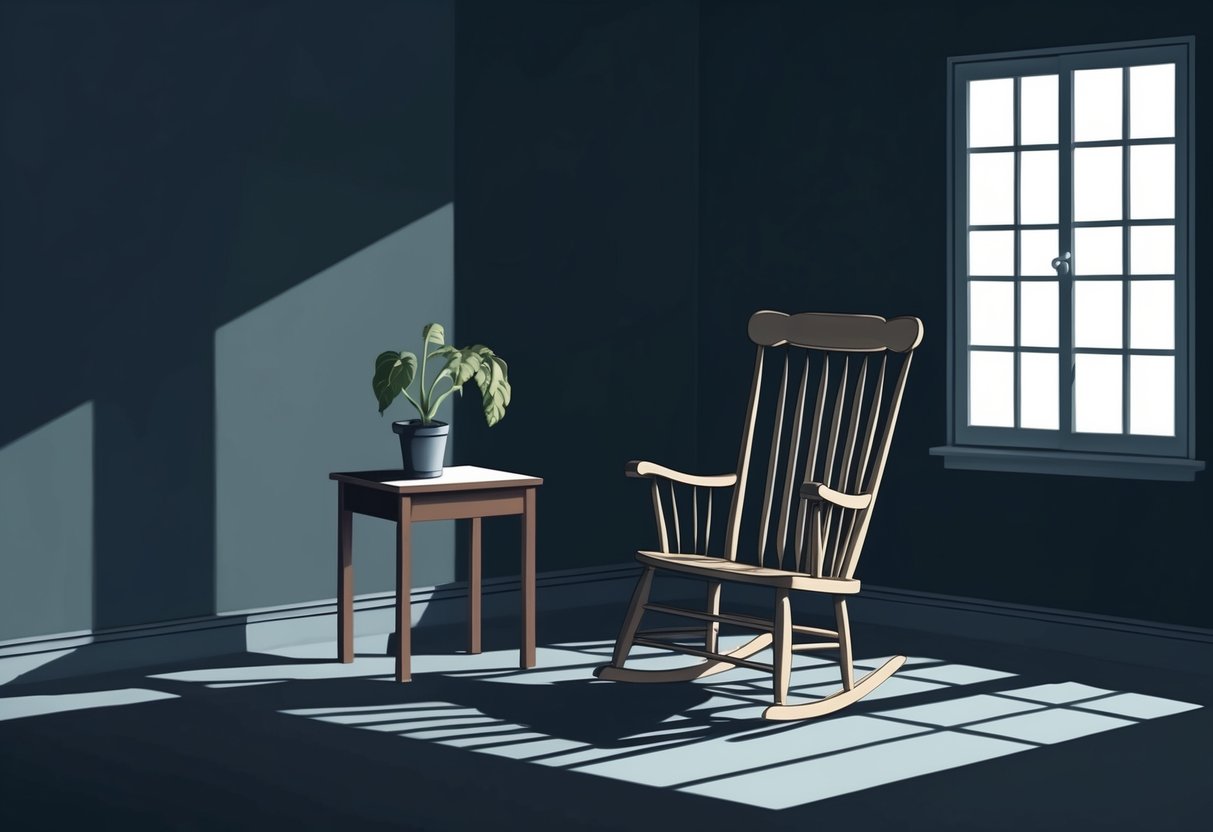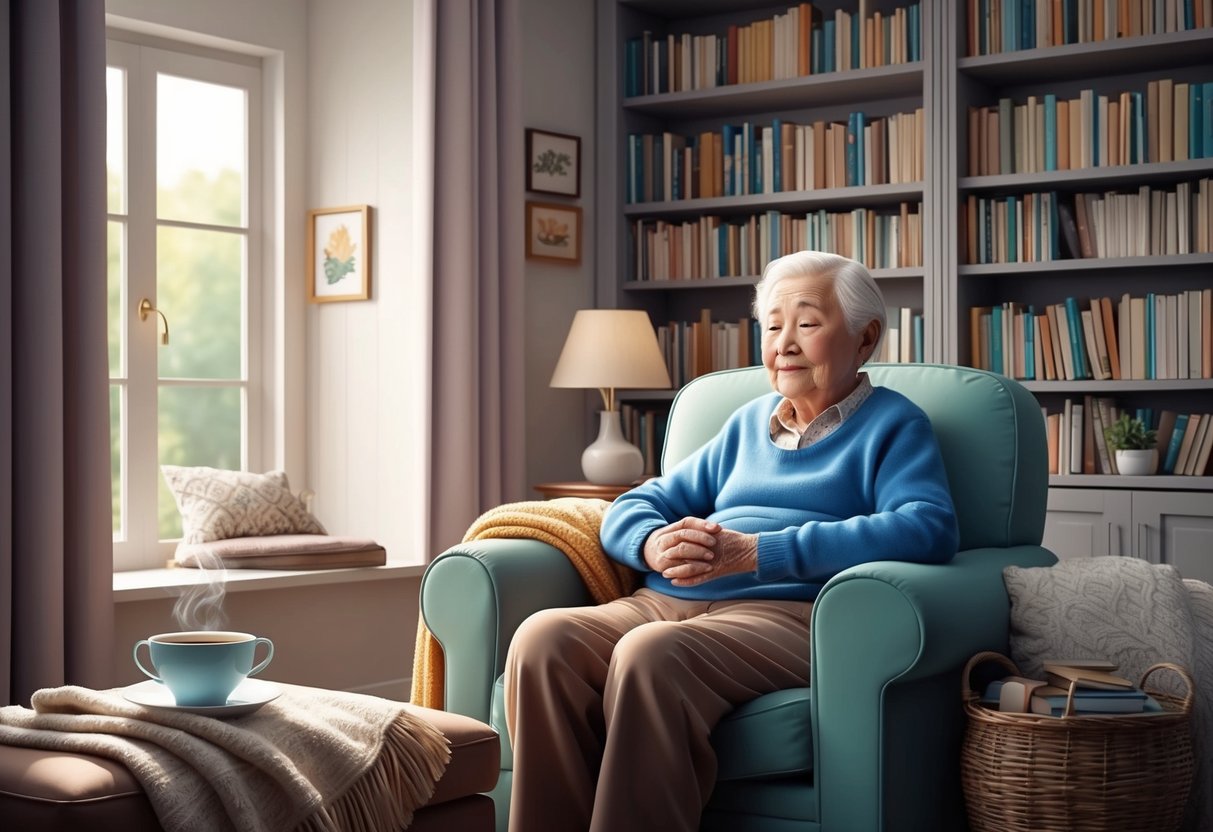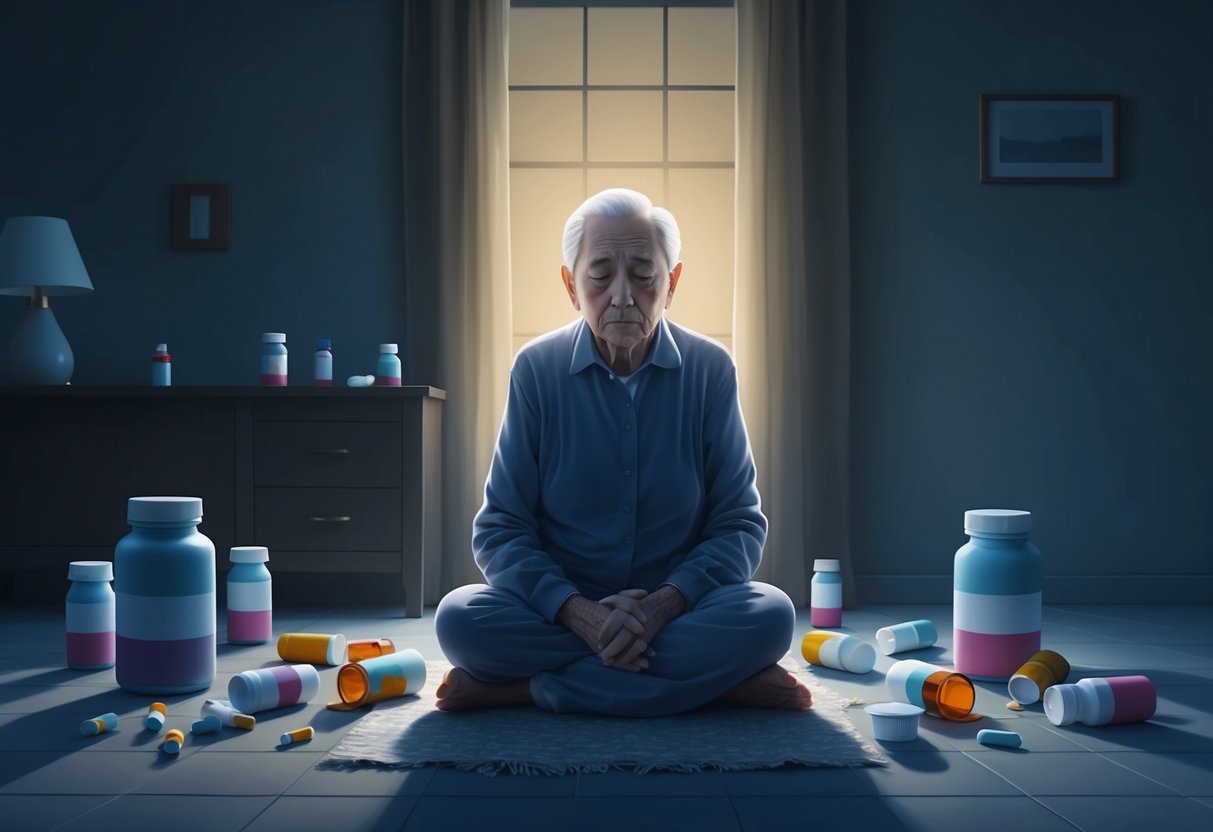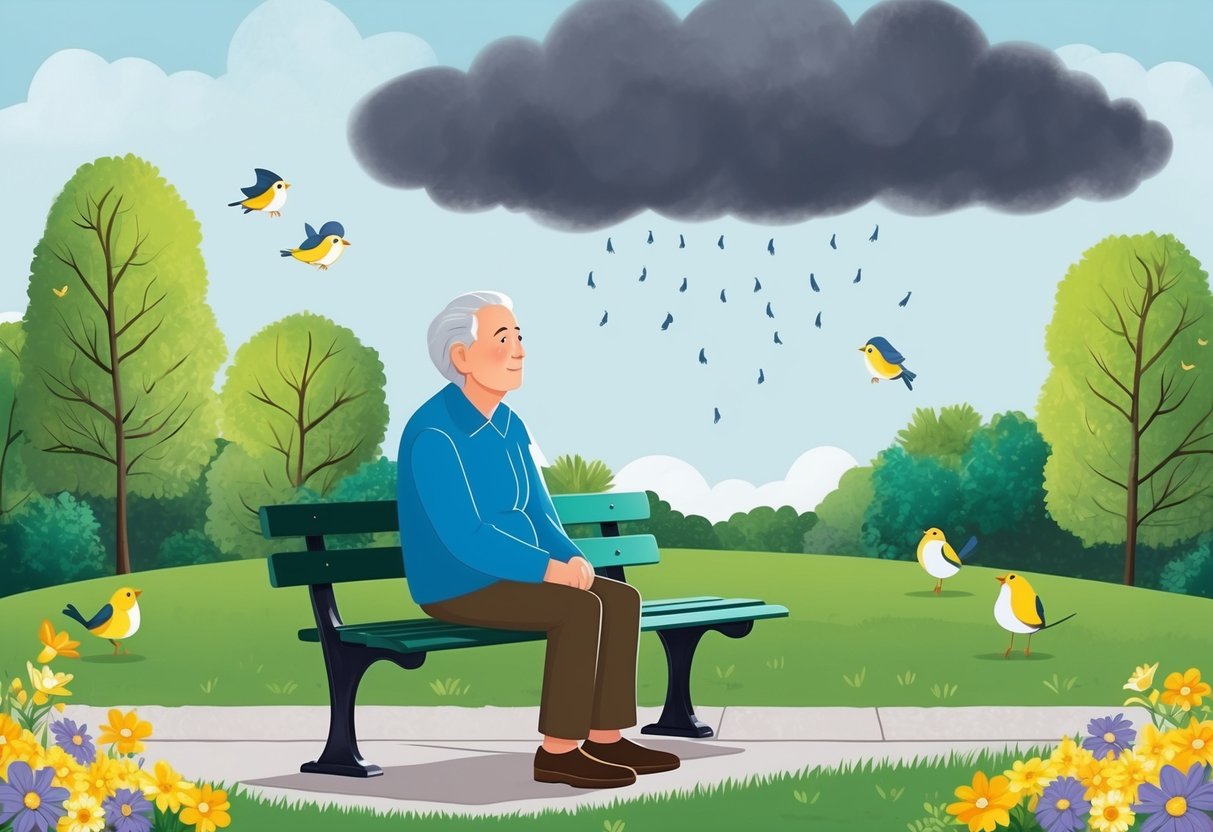Understanding Depression and Anxiety in Older Adults: Challenges, Treatments, and Support
Depression and anxiety are common mental health issues that affect people of all ages, including older adults. Many seniors face unique challenges that can impact their emotional well-being. These may include health problems, loss of loved ones, or changes in living situations.

Depression is not a normal part of aging, and most older adults feel satisfied with their lives despite physical health challenges. Still, it’s important to recognize the signs of depression and anxiety in seniors. These can include persistent sadness, loss of interest in activities, sleep problems, or excessive worry.
Recognizing and addressing mental health concerns in older adults is crucial. Anxiety is more common than depression in seniors, with Generalized Anxiety Disorder (GAD) being the most frequently diagnosed. Early detection and proper treatment can greatly improve quality of life for older adults dealing with depression or anxiety.
Prevalence of Depression and Anxiety in Older Adults

Depression and anxiety are common mental health issues among older adults. These conditions can have a big impact on quality of life and overall health.
About one in five adults experienced symptoms of anxiety (18.2%) or depression (21.4%) in a two-week period. This data shows how widespread these issues are in the general adult population.
For older adults specifically, the numbers are concerning. A systematic review found that the global prevalence of depression in older adults was 28.4%. This means more than a quarter of older people may experience depression.
Anxiety is also common in this age group. While exact numbers vary, many older adults deal with anxiety disorders or symptoms.
It’s important to note that rates can differ based on factors like:
- Geographic location
- Living situation (community vs. care facilities)
- Overall health status
- Social support
Older adults who are caregivers for spouses with conditions like dementia may be at higher risk for depression and anxiety. The stress of caregiving can take a toll on mental health.
These numbers highlight the need for better mental health support and awareness for older adults. Early detection and treatment can make a big difference in quality of life.
Risk Factors

Many factors can increase the chances of depression and anxiety in older adults. These include biological changes, psychological issues, and social circumstances. Understanding these risk factors is key to prevention and early treatment.
Biological Factors
Age-related changes in the brain can affect mood and lead to depression. Changes in brain chemistry may disrupt emotional regulation. Chronic health problems are also linked to higher rates of depression in seniors.
Some medical conditions common in older adults can increase anxiety risk. These include heart disease, diabetes, and thyroid disorders. Certain medications may have side effects that mimic anxiety symptoms.
Genetics play a role, too. A family history of mood disorders can make someone more likely to develop depression or anxiety later in life.
Psychological Factors
Past trauma or abuse can impact mental health well into old age. Unresolved grief from losing a spouse or friends is another risk factor.
Low self-esteem and negative thinking patterns often contribute to depression. Some older adults struggle with a loss of purpose after retirement.
Fear of falling or developing serious illnesses can trigger anxiety in seniors. Cognitive decline may also lead to increased worry and stress.
Social and Environmental Factors
Loneliness and social isolation are major risk factors for both depression and anxiety in older adults. The loss of social connections can be very challenging.
Financial stress due to limited income or high healthcare costs can impact mental health. Housing insecurity or living in unsafe neighborhoods may increase anxiety.
Lack of physical activity and poor nutrition can worsen mood. Limited access to mental health services is also a concern for many seniors.
Major life changes like moving to a nursing home can be very stressful. Loss of independence and relying on others for care may trigger depression.
Clinical Presentation

Depression and anxiety in older adults can present differently compared to younger populations. Key differences include physical symptoms, cognitive changes, and behavioral manifestations.
Symptoms of Depression in Older Adults
Depression in older adults often shows up in unique ways. Physical complaints like aches, pains, and fatigue are common. Older adults may experience changes in sleep patterns or appetite.
Memory problems and confusion can occur, sometimes mistaken for dementia. Mood symptoms may include irritability, sadness, or loss of interest in activities.
Social withdrawal and neglect of personal care are notable behavioral signs. Some older adults might express feelings of worthlessness or guilt.
Symptoms of Anxiety in Older Adults
Anxiety in older adults often manifests as excessive worry about health or finances. Physical symptoms can include restlessness, muscle tension, and sleep disturbances.
Cognitive symptoms might involve difficulty concentrating or making decisions. Older adults with anxiety may exhibit avoidance behaviors, limiting their activities or social interactions.
Anxiety can also present as irritability or agitation. Some older adults might experience panic attacks or phobias related to falling or being alone.
Differential Diagnosis
Distinguishing depression and anxiety from other conditions is crucial. Medical issues like thyroid disorders or vitamin deficiencies can mimic symptoms of mood disorders.
Cognitive decline or early dementia may present similarly to depression. Side effects from medications can also cause mood changes or anxiety-like symptoms.
Grief reactions following loss can resemble depression. Assessing for substance use disorders is important, as they can co-occur with or mimic mood and anxiety disorders in older adults.
Impact on Quality of Life

Depression and anxiety can greatly affect older adults’ quality of life. These mental health issues often lead to decreased enjoyment of daily activities and reduced social interactions.
Older adults with depression or anxiety may experience:
- Less interest in hobbies
- Trouble sleeping
- Poor appetite
- Low energy levels
- Difficulty concentrating
Research shows that increasing age has a negative effect on quality of life. This effect is made worse by depression and anxiety.
Physical health problems can also contribute to lower quality of life in older adults with mental health issues. Chronic pain or limited mobility may increase feelings of isolation and sadness.
Studies have found that depression has a big impact on quality of life for older adults. Anxiety also plays a role, though it has been studied less.
Proper treatment of depression and anxiety can improve quality of life for older adults. This may include therapy, medication, or lifestyle changes.
Social support is crucial for maintaining good mental health in older age. Regular contact with family and friends can help prevent feelings of loneliness and boost mood.
Screening and Diagnosis

Effective screening and diagnosis are key to identifying depression and anxiety in older adults. Early detection allows for timely treatment and improved outcomes. Proper tools and criteria help healthcare providers assess mental health accurately.
Screening Tools and Methods
Several tools can screen for depression and anxiety in older adults. The Geriatric Depression Scale (GDS) is a popular option. It uses 30 yes-or-no questions to check for depression symptoms. This format works well for people with cognitive issues.
Other useful tools include:
- Patient Health Questionnaire-9 (PHQ-9)
- Generalized Anxiety Disorder-7 (GAD-7)
- Hospital Anxiety and Depression Scale (HADS)
Primary care doctors often use these tools during routine check-ups. They can quickly spot potential mental health problems. Some clinics also use computer-based screenings.
Diagnosis Criteria
Doctors use specific criteria to diagnose depression and anxiety in older adults. The Diagnostic and Statistical Manual of Mental Disorders (DSM-5) provides guidelines. For depression, symptoms must last at least two weeks.
Common signs of depression in older adults include:
- Persistent sad mood
- Loss of interest in activities
- Sleep changes
- Fatigue
- Feelings of worthlessness
Anxiety disorders have different criteria. Symptoms often involve excessive worry and physical signs like rapid heartbeat.
Challenges in Diagnosis
Diagnosing mental health issues in older adults can be tricky. Physical health problems may mask or mimic symptoms. For example, fatigue could be due to depression or a medical condition.
Cognitive decline can also complicate diagnosis. Older adults may struggle to describe their feelings accurately. Some might view mental health problems as a normal part of aging.
Cultural factors play a role, too. Some older adults may feel stigma about mental health. This can lead to underreporting of symptoms. Doctors need to be aware of these challenges to make accurate diagnoses.
Treatments and Interventions

Depression and anxiety in older adults can be treated with various methods. These include medicines, talk therapy, alternative therapies, and lifestyle changes. Each approach offers unique benefits for managing symptoms and improving quality of life.
Pharmacological Treatments
Antidepressants are often prescribed to older adults with depression. Doctors commonly use SSRIs, SNRIs, and NDRIs. These drugs help balance brain chemicals linked to mood.
Doctors carefully choose medications for older patients. They consider side effects and interactions with other drugs. Dosages may start low and increase slowly.
For anxiety, anti-anxiety medications might be used. These include benzodiazepines and buspirone. But doctors use them with caution due to side effect risks in older adults.
Psychotherapy and Counseling
Talk therapy is very helpful for older adults with depression or anxiety. Cognitive-behavioral therapy (CBT) teaches skills to change negative thoughts and behaviors. It’s often used for both depression and anxiety.
Interpersonal therapy focuses on relationships and life changes. It can help older adults cope with losses and transitions. Problem-solving therapy is also effective. It helps people find practical solutions to life challenges.
Group therapy offers peer support and shared experiences. This can be especially valuable for older adults feeling isolated.
Alternative and Complementary Therapies
Some older adults find relief through alternative therapies. Mindfulness meditation can reduce stress and anxiety. It helps people focus on the present moment.
Acupuncture may help some people with depression symptoms. Yoga combines gentle exercise with relaxation techniques. It can improve mood and reduce anxiety.
Herbal supplements like St. John’s Wort are sometimes used. But, they can interact with other medications. Always consult a doctor before trying any supplements.
Lifestyle Modifications
Simple changes in daily life can greatly improve mental health. Regular exercise boosts mood and reduces anxiety. Even light activities like walking can help.
Social connections are crucial. Joining clubs or volunteer groups can combat loneliness. Hobbies and learning new skills keep the mind active and engaged.
Good sleep habits are important. A consistent sleep schedule can improve mood and energy. Limiting alcohol and caffeine can also help with sleep and anxiety.
Support and Resources

Getting help for depression and anxiety is important for older adults. There are many ways to find support and connect with others who understand.
Caregiver Support
Caring for an older adult with depression or anxiety can be hard. Caregivers need support too. Support groups offer a place to share feelings and tips with others in similar situations.
Online forums and message boards let caregivers connect any time. Local hospitals often have support groups that meet in person. These groups can help caregivers feel less alone.
Respite care services give caregivers a break. Adult daycare centers or in-home care can provide temporary relief. This allows caregivers time to rest and take care of themselves.
Community Programs
Many towns have programs to help older adults stay connected. Senior centers offer activities like exercise classes, art workshops, and group meals. These programs help fight loneliness and boost mood.
Mental health services are available in most areas. Counseling and therapy can be done one-on-one or in groups. Some places offer services on a sliding fee scale based on income.
Volunteer programs give older adults a sense of purpose. Helping others can improve mental health. Libraries, schools, and hospitals often need volunteers.
Prevention Strategies

Staying active is key to preventing depression and anxiety in older adults. Regular physical exercise can boost mood and reduce stress.
Social connections are vital. Joining clubs, volunteering, or attending community events can help combat loneliness.
A healthy diet rich in fruits, vegetables, and whole grains supports mental well-being. Limiting alcohol and caffeine intake is also important.
Getting enough sleep is crucial. Older adults should aim for 7-9 hours of quality sleep each night.
Engaging in mentally stimulating activities like puzzles, reading, or learning new skills can help maintain cognitive function and ward off depression.
Regular health check-ups are essential. Early detection and treatment of physical health issues can prevent them from contributing to mental health problems.
Stress management techniques such as meditation, deep breathing, or yoga can be effective in reducing anxiety.
Creating a supportive living environment is important. This may include making home modifications for safety and comfort.
Maintaining a sense of purpose through hobbies, part-time work, or helping others can boost self-esteem and reduce the risk of depression.
Future Directions in Research

Research on depression and anxiety in older adults is evolving. New studies aim to improve diagnosis and treatment for this age group.
One key area is digital mental health interventions. These tools show promise for assessing behavior and providing support. Scientists are working to make them more user-friendly for seniors.
Another focus is on personalized treatments. Researchers want to find the best approaches for each individual. This may involve combining different therapies.
Brain imaging studies are also important. They help us understand how aging affects mental health. This knowledge can lead to better targeted treatments.
Researchers are looking at the link between physical and mental health in older adults. Exercise and nutrition may play a big role in mood disorders.
Long-term studies are needed to track mental health over time. These can reveal risk factors and protective measures for anxiety and depression.
Scientists are also exploring new medications with fewer side effects for older adults. This is crucial as many seniors take multiple drugs.
Community-based interventions are another area of interest. Reducing stigma and improving social support can greatly impact mental health.

